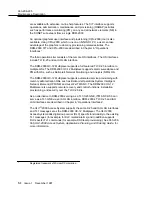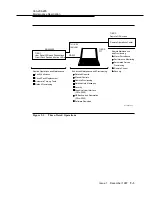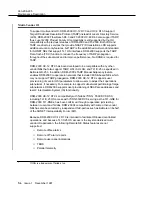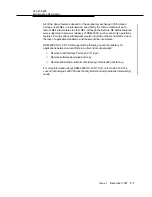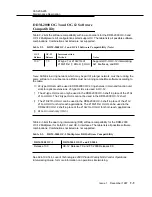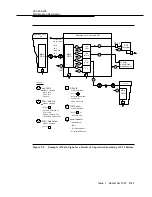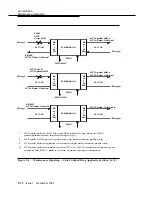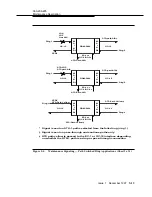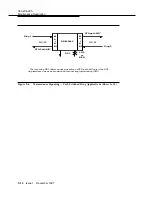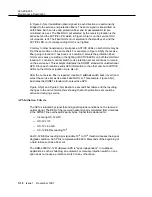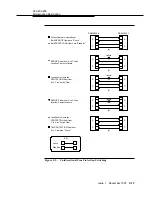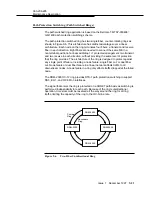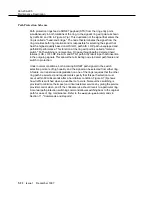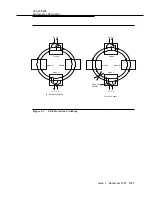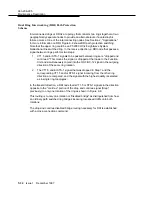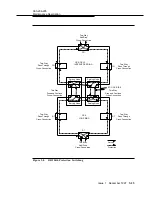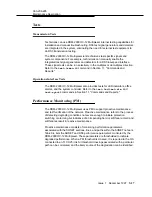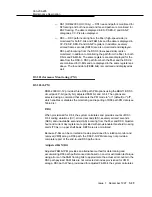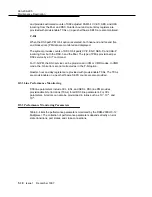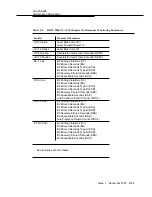
363-206-295
Maintenance Description
9-16
Issue 1
December 1997
Fault Detection, Isolation, and
Reporting
9
Detection
9
The DDM-2000 OC-12 Multiplexer continuously monitors all circuit packs and
incoming signals for faults. Incoming SONET signals are monitored for loss of
signal (LOS), loss of frame (LOF), loss of pointer (LOP), and bit error ratio (BER)
thresholds, and for the maintenance signals described above. Incoming DS3
signals are monitored for LOS and BER thresholds. The BER thresholds for DS3
are based on bipolar 3-zero substitution (B3ZS) coding violations. The DS3
signals received from the fiber are monitored for AIS and out of frame (OOF)
conditions, unless they are provisioned for clear channel (CC) mode. DS1 timing
references are monitored for AIS, BER, excessive out of frame (EOOF), LOF,
LOS, and out of lock (OOL) conditions.
Isolation
9
When a fault is detected, the DDM-2000 OC-12 Multiplexer uses automatic
diagnostics to isolate the fault to a particular signal or circuit pack.
Reporting
9
The system automatically and autonomously reports all alarm and status
conditions through the appropriate user panel and equipment indicators, office
alarm relays, and through the TL1/X.25 interface. The system stores a record of
all fault conditions and reports them on demand through the CIT and the TL1/X.25
interface. The DDM-2000 OC-12 Multiplexer also stores a history of the past 500
alarm and status conditions and CIT events and reports them on demand through
the CIT interface. Each event is real time and date stamped.
If the diagnostic determines that a circuit pack has failed, the red FAULT LED on
that circuit pack is turned on. If an incoming electrical signal from the DSX fails,
the red FAULT LED on the affected circuit pack flashes on and off in one-second
intervals. A failed incoming optical signal has the same effect.
The DDM-2000 OC-12 Multiplexer provides alarm holdoff and clear delays. The
alarm holdoff delays prevent transient failures from causing unnecessary
maintenance activity. The office alarms are not activated and the OSs are not
notified until a failure lasts at least as long as the alarm holdoff delay. Alarm clear
delays prevent premature clearing of alarms. Alarm indications are not cleared
until a fault condition has been clear for at least as long as the alarm clear delay.
Incoming signal failure conditions, AIS, and FERF signals, are subject to the

